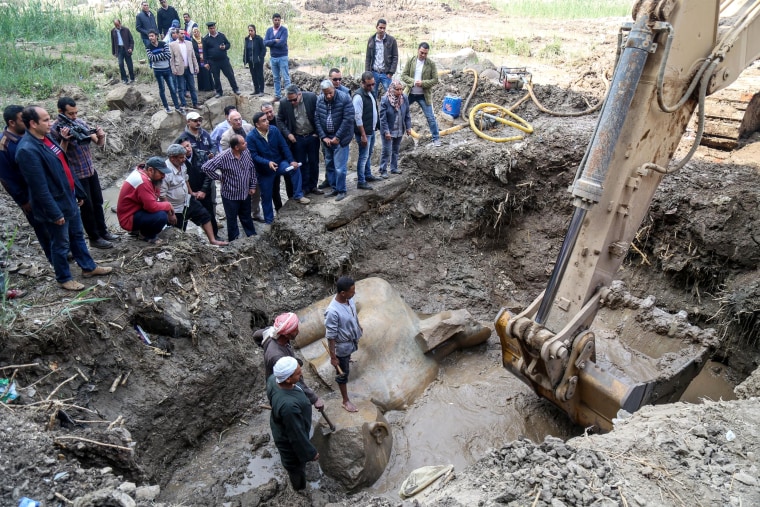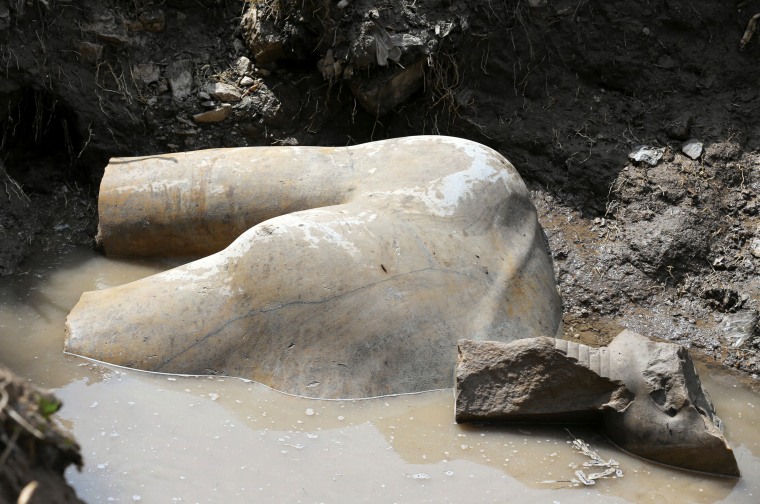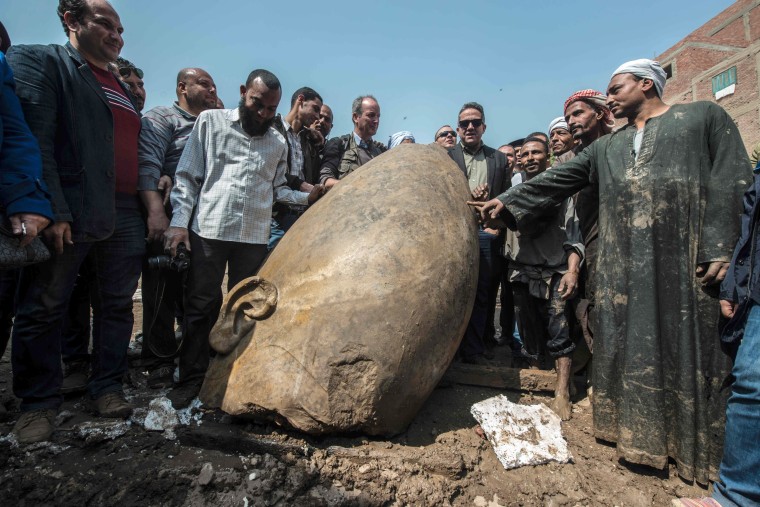Archaeologists have found a 26-foot statue submerged in ground water in a Cairo slum that the Antiquities Ministry has hailed as one of the most important discoveries ever.
Experts say it probably depicts revered Pharaoh Ramses II, who ruled Egypt more than 3,000 years ago.
The was unearthed near the ruins of Ramses II’s temple in the ancient city of Heliopolis, which is located in the eastern part of modern-day Cairo.
“Last Tuesday they called me to announce the big discovery of a colossus of a king, most probably Ramses II, made out of quartzite,” Antiquities Minister Khaled al-Anani said Thursday.

The quartzite colossus possibly of Ramses II and limestone bust of Seti II were unveiled on Thursday.Anadolu Agency / Getty Images
The most powerful and celebrated ruler of ancient Egypt, the pharaoh also known as Ramses the Great was the third of the Nineteenth Dynasty of Egypt.
He led several military expeditions and expanded the Egyptian Empire to stretch from Syria in the east to Nubia in the south. His successors called him the “Great Ancestor.”
On Thursday, archaeologists, officials, local residents, and members of the news media looked on as a massive forklift pulled the statue’s head out of the water
The joint Egyptian-German expedition also found the upper part of a life-sized limestone statue of Pharaoh Seti II, Ramses II’s grandson, that is 31 inches long.

The torso of the statue of Pharaoh Ramses II was unveiled on Thursday.Mohamed Abd El Ghany / Reuters
The sun temple in Heliopolis was founded by Ramses II, lending weight to the likelihood the statue is of him, archaeologists say.
It was one of the largest temples in Egypt, almost double the size of Luxor’s Karnak, but was destroyed in Greco-Roman times. Many of its obelisks were moved to Alexandria or to Europe and stones from the site were looted and used for building as Cairo developed.
“It is one of the most important excavations in Egypt,” Dr. Salima Ikram, an archaeologist and professor of Egyptology at the American University in Cairo who was part of the dig this week told NBC News. She described the new find as “spectacular, the things are astonishing.”
She said the ongoing work at the site is “crucially important because it is basically rescue archaeology of one of the most important religious places in ancient Egyptian history. It is the birthplace of the Sun God and indeed of Egypt and its civilization in terms of Egyptian mythology.”
Experts will now attempt to extract the remaining pieces of both statues before restoring them. If they are successful and the colossus is proven to depict Ramses II, it will be moved to the entrance of the Grand Egyptian Museum, set to open in 2018.
The discovery was made in the working-class area of Matariya, among unfinished buildings and mud roads.






